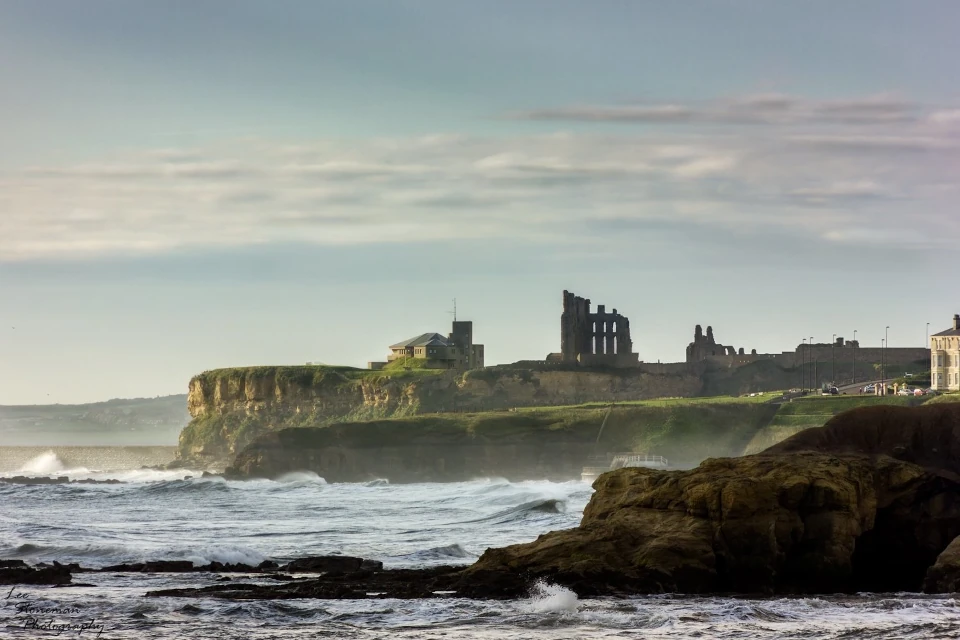The Wreck of the Iron Crown and a Letter Left Behind
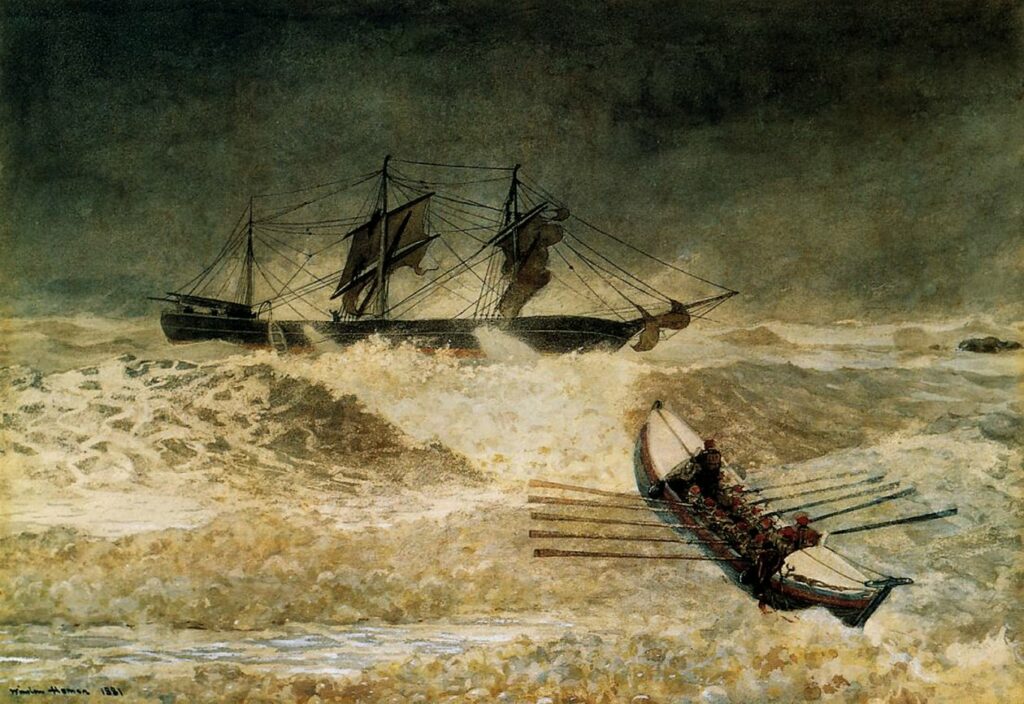
Where better to start this story of a most difficult but entirely successful rescue, than the Brigade’s official history, TVLB 1864-1994: A Chronicle: 130 Years of the Tynemouth Volunteer Life Brigade:
“Just past midnight on the 21st October [1880] the alarm was raised that a vessel was in distress on the North side of the Tyne. The ship, the Iron Crown, was reported to have struck the North Pier and then drifted onto the Black Middens. While the lifeboat crew struggled for over an hour to launch in the heavy seas, the Volunteers fired lines from the Pier to the Iron Crown and having freed them from initial entanglement began hauling back the crew in the breeches buoy in rapid succession. The Volunteers had removed five people when the lifeboat finally got alongside and took the remaining people to safety.”
The ship’s anchor held through the night, but there was still a man left on board. He had been believed to be dead. From the official report:
“Towards morning, it was found that one man was missing, & at daylight, he was seen on her deck. Fortunately, she was a very strong ship & her chain cable held, she only bumping at her stern on the rocks. As the tide rose and the sea became stronger the chain cable could be heard link by link passing over the windlass, and it was clear that it must soon break from the great strain. As the man alone could do nothing with the rocket lines, it was decided to launch the Life Boat and bring him off, this was done about 11 o’clock a.m. About twenty minutes after he was landed her chain cable broke and in a minute or two she was broadside on to the rocks, every wave making a complete breach over her. During the night, she went all to pieces.”
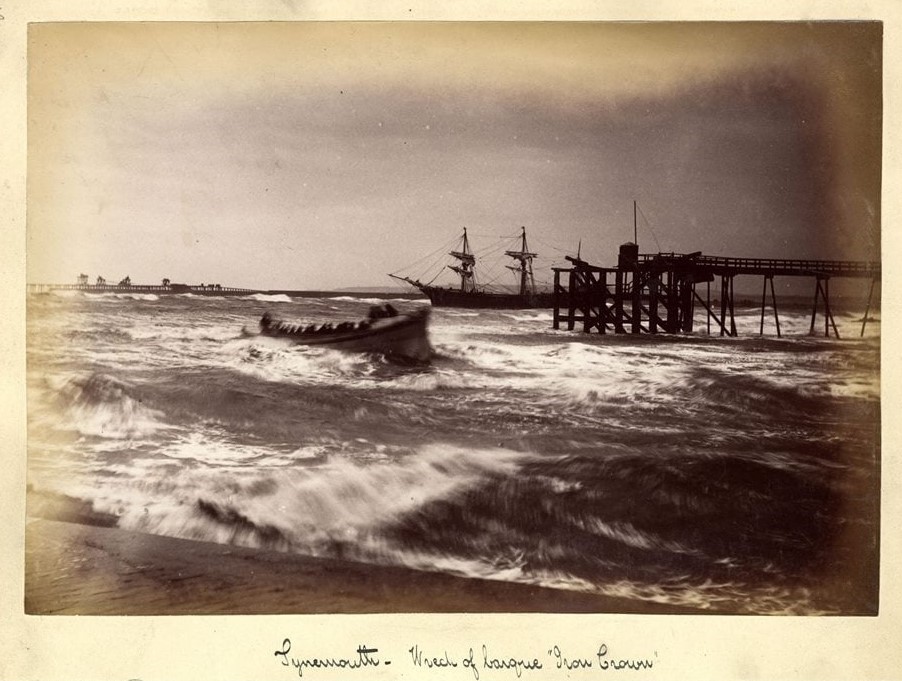
The last of the five brought ashore by breeches buoy handed over a letter written by the Captain, stating that he wished his wife to be rescued next, with it implied that extra care should be taken with her. But no further rescues were required using the rocket apparatus, as the lifeboat had arrived at 2.30am and was ready to receive the remainder of the crew. The Brigade still have the letter, it reads as follows:
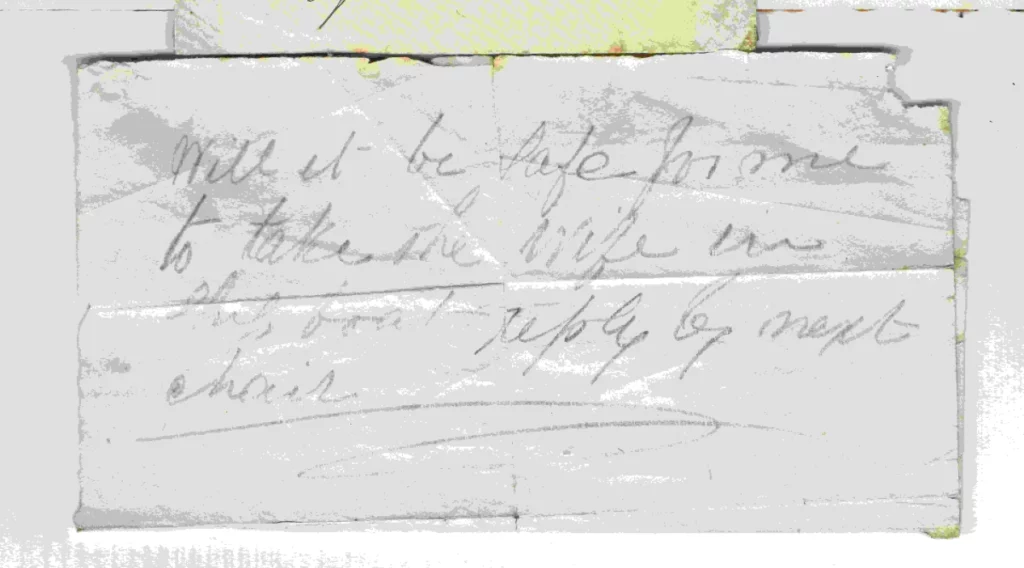
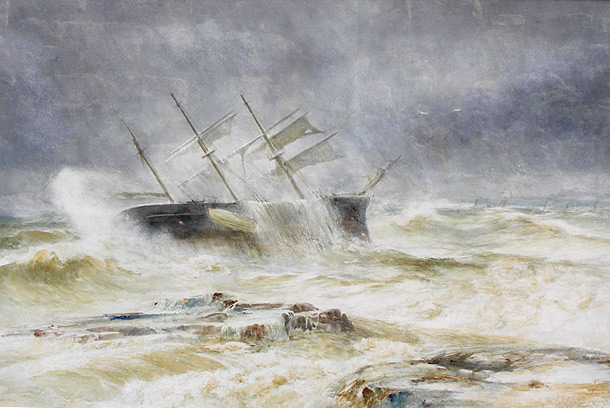
The Iron Crown was a massive 995-ton barque built at Palmers Yard in Jarrow. She had been en route from Hamburg to the Tyne in ballast. She was one of the strongest vessels yet built on the Tyne, but broke up within hours of being driven onto the Battery Rocks. The broken parts of her iron hull were strewn across the area, making the place resemble a scrap yard at low tide.

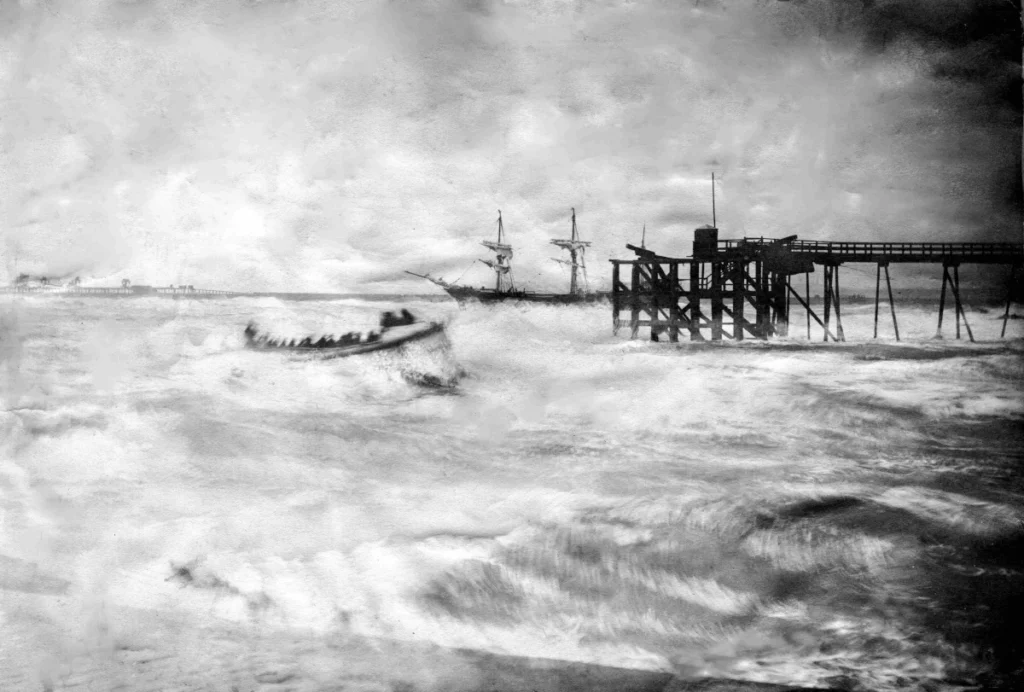
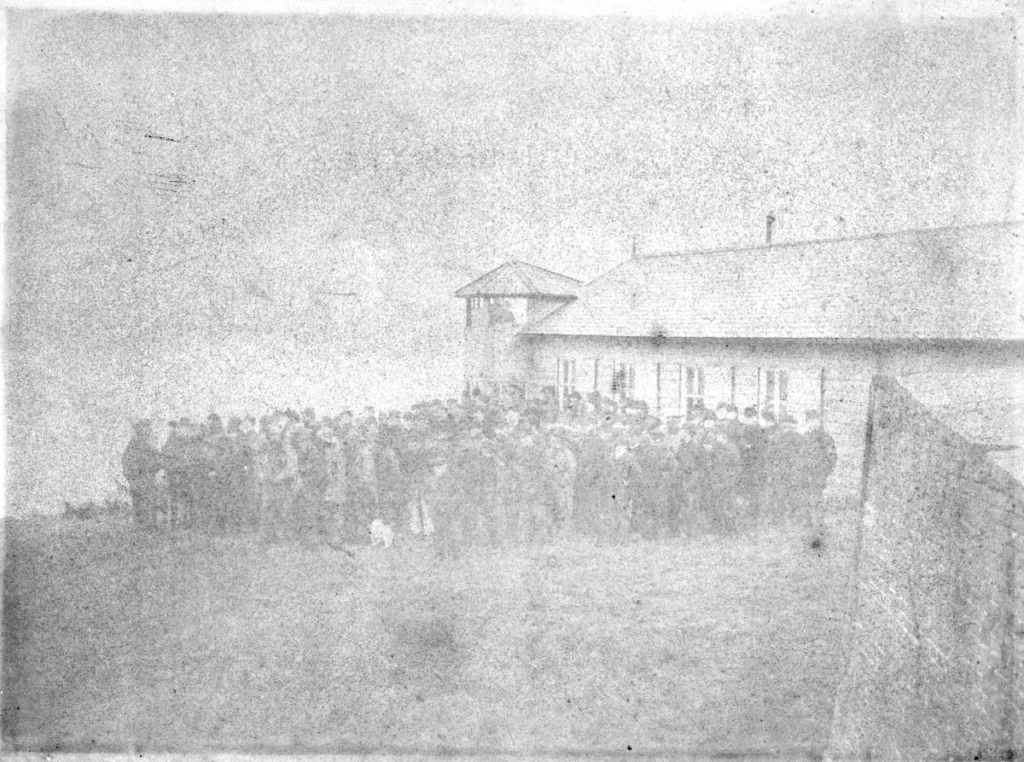
There were around 90 Brigade members in attendance before the guns on the Spanish Battery sounded. They were joined on the Pier by a gathering of onlookers. Two rockets were fired from the Pier to the vessel as waves crashed over the Brigademen and the crowd, who cheered as each crewmember was landed. A number of rockets were also fired skywards from the vessel to shed light on her situation.
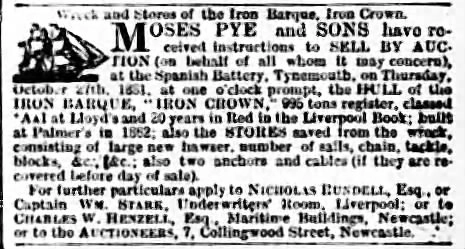
Articles from the Shields Gazette, 22nd October 1881.
THE GALES.
YESTERDAY’S STORM IN THE NORTH SEA.
THE AFTERMATH OF THE WRECK OF THE IRON CROWN.Between twelve and one o’clock terrible seas were playing havoc with the barque Iron Crown. The sound of her ragged sails flapping in the wind resembled a volley of musketry. Her going to pieces in a very short time was imminent. Shortly before two o’clock her masts fell, and with a dreadful sound, accompanied by a brilliant illumination amidships, produced by friction, she broke into pieces and sank: Nothing was to be seen of her afterwards, beyond portions of her stem and stern heaving like black shadows on the water, alternately obliterated by the lashing sea. Mr Shallcross, owner of the vessel, was down looking at her at eleven o’clock. He felt confident that she would remain intact.
About three o’clock lights, or fancied lights. were seen on the horizon, but a murky haze in the atmosphere made indiscernible their bearing. The breakers, white as the driven snow, rolling into the harbour and on the Black Middens, was a fine spectacle. About four o’clock the wind freshened into a succession of violent squalls. A light at this time was seen a little to the south of the North Pier, but it was thought that the vessel, whatever she might be, was tacking out till daylight. The scene inside the Brigade House well on in the morning, was a striking contrast to the preceding night, when all was activity and bravery shown in the saving of life. Last night, however, stalwart fellows were soundly sleeping, glad of an opportunity to refresh the exhausted energies produced by long watching and hard work. At daybreak the sea was still very tempestuous, and doing much to remove all traces of the ill-fated Iron Crown. The wind was blowing steadily from about the old quarter.
INCIDENTS AT THE WRECK OF THE IRON CROWN.
The captain of the Iron Crown seems to have exhibited remarkable coolness in the midst of peril on Friday night. It appears that when one of the crew was being hauled ashore by the rocket apparatus, the vessel heeled over and slackened the hawser, the consequence being that he was hauled through the breakers head-over-heels. On being landed he, in a gasping state, lay back and pointing to his necktie exclaimed “Captain’s letter” Willing hands at once loosened the scarf, and found a note from the captain, asking if it would be safe to send his wife ashore with the lifeline. Again, while the crew were being taken aboard the lifeboat, another hand in lowering himself down the rope, fell overboard, right between the lifeboat and the ship, and narrowly escaped being jammed or drowned. The coxswain of the lifeboat grasped the collar from behind, and dragged him into the lifeboat. He did not feel the effects much, for he jumped ashore from the lifeboat with surprising agility.
THE IRON CROWN.
LATER DETAILS.A quantity of wreckage of the Iron Crown is washing ashore at the Black Middens. Pieces of beef, some clothing, and wood are mixing with the rocks and sea-weed. A considerable number of men, women and children, were industriously searching for treasure trove.
Thank you to John Wright of the TVLB and Stevel Ellwood @TyneSnapper for their help in curating this content.
Listen to the audio for this post here:
The Tynemouth Volunteer Life Brigade need support in order to continue to their vital work keeping people safe on our shorelines. Please consider a donation here: justgiving.com/tynemouth-vlb





